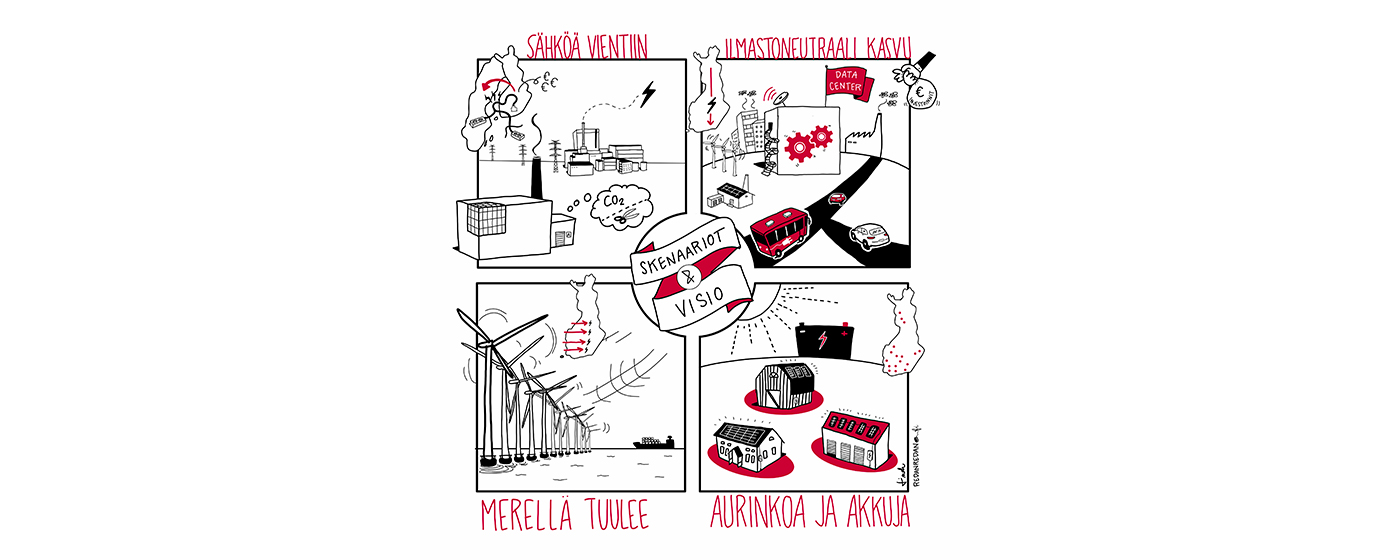Fingrid’s network vision, which was published in January, reviews scenarios for future electricity consumption trends in Finland over the next 15–25 years and considers the need for electricity transmission created by the increase in consumption.
In its network vision, Fingrid estimates that Finland’s target of becoming carbon neutral by 2035 will require approximately EUR 3 billion of investment in the main grid over the next 15 years. This is in line with Fingrid’s current investment programme. Investments in the main grid will enable clean domestic energy generation and allow industry, transport and heating to become electric.
Envisaging the future together for the first time
Network visions are usually prepared every three years. This was the first time that the work was done with public stakeholder collaboration.
“We started by creating four different scenarios for future electricity needs in Finland, and we asked our stakeholders for feedback on them. We received some really good, well-reasoned and insightful feedback,” says Mikko Heikkilä, Fingrid’s Manager of Strategic Grid Planning.
“We made changes to the scenarios based on the feedback – for example, we increased the growth of offshore wind power – but, above all, we received confirmation that our conceptions of the future were broadly correct. The debate on our vision will continue in the spring in forums such as the Fingrid Current event and the customer committees,” Mikko Heikkilä continues.
In its vision, Fingrid considers the requirements for transmission capacity on the main grid so that as many scenarios as possible would benefit from a stronger network cost-effectively.
“The need for clean energy is likely to increase significantly by 2035 as industrial processes, among others, switch from fossil fuels to electricity. In the future, the need for electricity may grow exponentially as a consequence of energy exports or strong growth in energy-intensive industries using clean electricity,” says Fingrid’s Specialist, Eveliina Seppälä.
“The investments in the main grid will enable electricity-intensive investments to be made in Finland, and they will be essential for Finland’s competitiveness as it becomes a carbon-neutral society,” Eveliina Seppälä continues.
In the future, Finland will need many times more electricity transmission capacity from the north to the south than it currently has. Finland’s chances of succeeding in its climate objectives will be boosted by the implementation of new electricity transmission links to Sweden and the Baltic states. Based on the vision, Fingrid will prepare a main grid development plan for the next ten years.
Read more about the network vision:
www.fingrid.fi/verkkovisio






